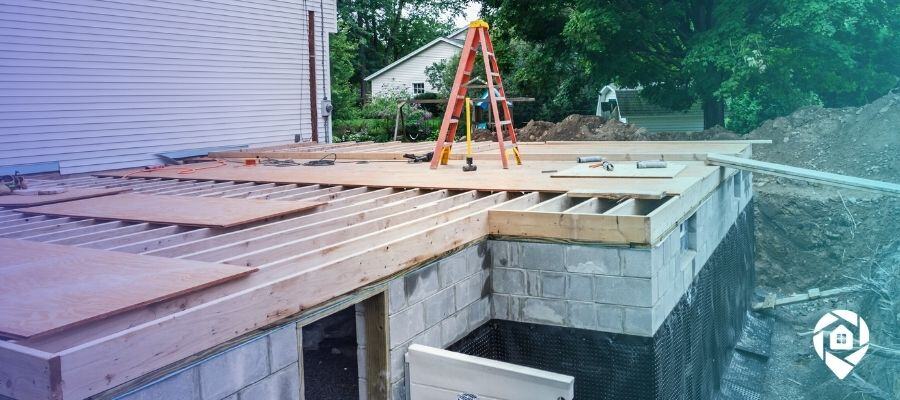
Maximize Space & Value with Accessory Dwelling Units

If you're a real estate investor who owns single-family homes, you're always looking for ways to generate more income from your rental properties. Innovative ideas such as house hacking have enabled many investors to maximize their rental income.
However, there is another strategy that is becoming increasingly well-known and favored in the world of real estate investing that you might want to consider: Accessory Dwelling Units or ADUs.
What are Accessories Dwelling Units (ADUs)?
ADUs are relatively mini, stand-alone structures that you build on your property. They provide additional dwelling space that can be used for many purposes such as a guest room, business area, or more living areas. ADUs are particularly prevalent in areas where housing costs are high, and affordable housing is rare. They provide a cost-effective method for extending your living area.
Benefits of Accessory Dwelling Units
These dwelling units offer many benefits making them an excellent investment for single-family homes. Some of the notable advantages include:
- Lower construction cost compared to conventional home additions.
- Increased income potential from rental income or possible home-sharing platforms
- Rising overall property value after adding an ADU.
As a real estate investor, one aspect that makes ADUs an attractive investment is the potential for obtaining additional rental income. This is especially true in densely populated or desirable urban areas where housing demand often exceeds supply.
How to Add an ADU to Your Property
But let's not jump directly into investing in an ADU. First, let's understand how to go about building an Accessory Dwelling Unit and the best practices to follow.
Admittedly, building an ADU entails more than merely selecting a design and breaking ground. Below are step-by-step procedures for extending your living space with an ADU:
- Assess Your Land: The first step entails an analysis of your property. Notably, it’s crucial to find out your local policies concerning ADUs.
- Plan your ADU: Planning involves choosing your ADU's design and layout based on your needs. It’s recommended to contact architects or experts to help with this.
- Get the Necessary Approvals: Next, you will need permits and approvals from local authorities. With your building plan, submit your application and wait for clearance.
- Construction: After approval, the next step is the actual construction of the ADU. Hiring contractors with a proven track record will help ensure high-quality results.
- Inspection: Before utilization, local authorities usually inspect the completed ADU to ensure its safety and compliance with building standards.
Additional Considerations for a Smooth ADU Build
Choosing the Right ADU Type: There are different ADU styles to consider, such as detached units, garage conversions, or basement apartments. Think about what best suits your space and budget.
Understanding Utility Connections: ADUs need water, electricity, and sometimes gas. Make sure your main house can support these additions or factor in extra costs for upgrades.
Maximizing Space and Functionality: A well-designed ADU should have smart storage solutions, good lighting, and privacy from the main home. Adding features like energy-efficient windows or solar panels can increase long-term savings.
Hiring the Right Professionals: Working with an experienced architect, contractor, or ADU specialist can make a big difference. They will help you design a space that fits local codes and maximize the potential of your property.
Cost Estimation and Budgeting: Many people focus only on construction costs, but other expenses like permits, utility connections, landscaping, and furnishing should also be planned for. Always set aside extra funds for unexpected issues.
Rental or Personal Use Planning: If you plan to rent your ADU, research local demand and pricing for similar units. If it's for personal use, consider future needs—such as a home office, guest space, or housing for a family member.
Legal and Tax Implications: Adding an ADU may affect your property taxes and insurance. Some areas also have rent control laws or special regulations for short-term rentals. Speak with a real estate expert to understand the financial impact before you build.
Avoiding Pitfalls with Accessory Dwelling Units
Building an ADU can be an exciting investment, but rushing into it without proper planning can lead to costly mistakes. To ensure success, it’s important to be aware of common pitfalls and how to avoid them.
One of the biggest mistakes investors make is underestimating costs. While ADUs can be more affordable than traditional home additions, expenses like permits, labor, and utility connections can add up quickly. Unexpected costs, such as soil preparation or upgrading your main house’s electrical panel, can push your budget higher. Always set aside extra funds to cover surprises.
Another major pitfall is choosing the wrong location on your property. An ADU should have good access, privacy, and natural light. If you build too close to trees, it can cause root problems, and if drainage isn’t considered, you could end up with flooding issues. Carefully planning the best placement will make the unit more functional and appealing to tenants.
Ignoring zoning laws and permitting rules is another common problem. Some investors assume they can build whatever they want, only to find out later that their ADU doesn’t meet local regulations. This can lead to hefty fines or even being forced to tear it down. Always check your local rules before starting construction.
Finally, failing to plan for long-term maintenance can be a costly mistake. Choosing cheap materials or skipping regular upkeep can result in expensive repairs later. By using quality materials and hiring experienced professionals, you can create an ADU that stays valuable for years to come.
Conclusion
Building an ADU effectively requires careful planning, meticulous execution, and a deep understanding of your local market and tenant requirements to make the most out of your investment. Remember, ADUs are not merely about extending living space for less cost; they represent a progressive trend for real estate investors looking for impactful ways to drive passive income.
As we navigate the rapidly evolving real estate landscape, it is crucial to stay updated on such emerging trends. So let's continue exploring more ways to optimize our investments while providing affordable housing solutions.

About Samantha Ankney
Samantha is the Social Media Manager at DealMachine, where she oversees all social media strategies and content creation. With 3 years of experience at the company, she originally joined as a Media Specialist, leveraging her skills to enhance DealMachine's digital presence. Passionate about connecting with the community and driving engagement, Samantha is dedicated to sharing valuable insights and updates across all platforms.



